Cupbearer Was Privy To Conversations And Political Secrets Hidden Behind Closed Doors
A. Sutherland - AncientPages.com - The role of the cupbearer goes back many thousands of years, and many prominent figures held it.
The cupbearer was a trusted person at the royal courts and in the nobles' and princes' households. His duty was to supervise, pour, and serve the drinks at the royal table.
 Nehemiah served as the king's cupbearer (Nehemiah 1:11), which gave him countless possibilities to speak to the king and request favors from him. Image source
Nehemiah served as the king's cupbearer (Nehemiah 1:11), which gave him countless possibilities to speak to the king and request favors from him. Image source
The chosen cupbearer was usually a high-ranked and noble person of the royal court. Usually, he was also influential, wealthy, and the ruler trusted him, often showing gratitude.
He was with the ruler at all times, and his primary duty was to taste the wine served to the king as a precaution against poisoning. The king could rely on his loyalty and trust him.
In old times, monarchs were paranoid about attempted assassinations, but not without reason. Due to the constant fear of conspiracies and intrigue, the king's cupbearer must be completely reliable. As poisoning was very often a way to get rid of a king or another important figure, the cupbearer's most serious responsibility was to protect his master, family members, and guests at the table.
Secret Conversations Behind Closed Doors
He had to make sure that no one had tampered with drinks and food. The cupbearer would also pour wine or other drinks to honored guests present at the table. It would make him privy to many conversations taking place at the table and political secrets that were always hidden behind closed doors.
In many cases, the threat of poisoning was often real. The cupbearer's high-risk job was not only vital but also dangerous and full of responsibility because he was also a security officer to protect him against assassination.
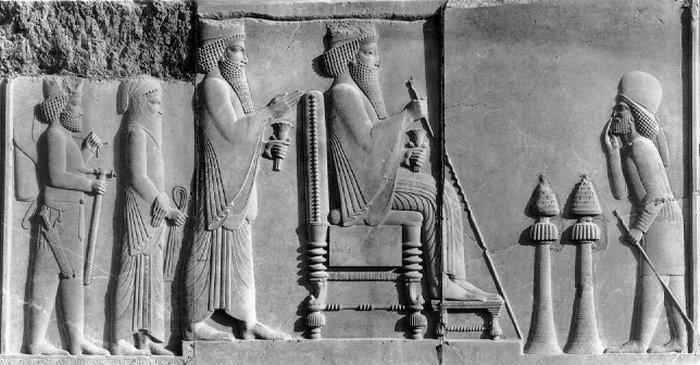 Bas-Relief From Persepolis, Ancient Persia). It shows Darius I, the Great, sitting on the throne, and he is followed by his son, Xerxes, the Crown Prince. Nehemiah - the Chief Cupbearer, is standing behind Xerxes. Credit: Public Domain
Bas-Relief From Persepolis, Ancient Persia). It shows Darius I, the Great, sitting on the throne, and he is followed by his son, Xerxes, the Crown Prince. Nehemiah - the Chief Cupbearer, is standing behind Xerxes. Credit: Public Domain
He daily placed his own life at risk, which made his profession extremely dangerous.
The Cupbearer Was A Trusted Advisor
The cupbearer was the king's trusted advisor and the one who was expected to give honest advice behind closed doors. Being almost always in the king's presence, the cupbearer listened to many private and often secret information. Therefore, he was required to be trustworthy and able to keep the confidence.
Having his master's affection and trust, the cupbearer could change his career path by getting a position with significant influence.
There were many prominent, wealthy, and trusted cupbearers in Sumer, Egypt, where foreigners held the position as cupbearers, Assyria, Canaan, Persia, Poland, Sweden, and other royal courts.
In Mesopotamia, the job of a cupbearer was highly respected. Kings had assigned cupbearers, who were trusty members of the royal court responsible for overseeing all the dining activities. Cupbearers' work was not only limited to kings but also government workers.
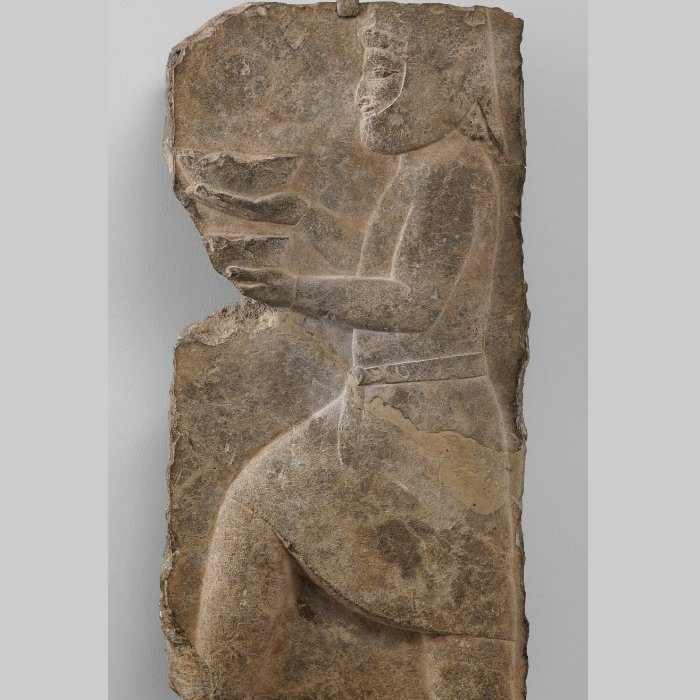 Persian, Achaemenid, Persepolis, Iran, 486–465 B.C., Cupbearer, relief from the Palace of Xerxes I. source
Persian, Achaemenid, Persepolis, Iran, 486–465 B.C., Cupbearer, relief from the Palace of Xerxes I. source
One of the most famous personalities of the ancient world was Sargon of Akkad, who was the cupbearer for Ur-Zababa of Kish. As many of us probably know, he would later take the throne as the first emperor of the Akkadian Empire in 2334 BC, and his great empire flourished about two centuries before it finally ended around 2,100 B.C.
Another cupbearer was Nehemiah, a high official in the Persian court of King Artaxerxes I at Susa's capital city in what is now modern Iran.
Nehemiah wanted so much to return to Jerusalem to rebuild Jerusalem's walls. So e did, but before it happened, he served as the king's cupbearer (Nehemiah 1:11), which gave him countless possibilities to speak to the king and request favors from him.
Herodotus described the royal cupbearer's office in Persia as a great honor "of very particular distinction."
Also, an Athenian historian, philosopher, and soldier, Xenophon (c.430 BC – 354 BC), described a cupbearer's duties in the royal court of the Medes. According to his description, the cupbearer was "handsome" and had the role of presenting certain persons to the king and keeping others out. He poured and served the wine to the king with great skill, tasting it first to guard against poisoning.
Written by – A. Sutherland - AncientPages.com Senior Staff Writer
Updated on January 31, 2024
Copyright © AncientPages.com All rights reserved. This material may not be published, broadcast, rewritten or redistributed in whole or part without the express written permission of AncientPages.com
Expand for referencesReferences:
O F Walton, The King's Cup-Bearer
Princeton University Art Museum
Herodotus, The Histories, John M. Marincola, et al.
More From Ancient Pages
-
 Ancient Lost Empires And Treasures Discovered In Afghanistan By Spy Satellites
Archaeology | Dec 16, 2017
Ancient Lost Empires And Treasures Discovered In Afghanistan By Spy Satellites
Archaeology | Dec 16, 2017 -
 Unraveling The Mystery Of Ancient ‘False Doorways’
Featured Stories | May 24, 2014
Unraveling The Mystery Of Ancient ‘False Doorways’
Featured Stories | May 24, 2014 -
 Was Ice Age Cave Art Influenced By Pareidolia?
Archaeology | Oct 7, 2023
Was Ice Age Cave Art Influenced By Pareidolia?
Archaeology | Oct 7, 2023 -
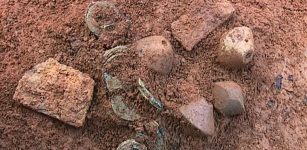 2,000-years-old tomb found in S. China
Archaeology | Apr 6, 2016
2,000-years-old tomb found in S. China
Archaeology | Apr 6, 2016 -
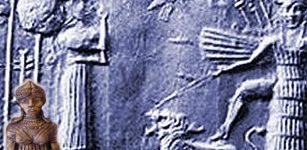 Ereshkigal – Ruler Of The Sumerian Underworld And Most Feared Deity In Mesopotamian Pantheon
Featured Stories | Mar 16, 2017
Ereshkigal – Ruler Of The Sumerian Underworld And Most Feared Deity In Mesopotamian Pantheon
Featured Stories | Mar 16, 2017 -
 A Half-A Million-Year-Old Well-Preserved Elephant Tusk Unearthed In Israel
Archaeology | Sep 2, 2022
A Half-A Million-Year-Old Well-Preserved Elephant Tusk Unearthed In Israel
Archaeology | Sep 2, 2022 -
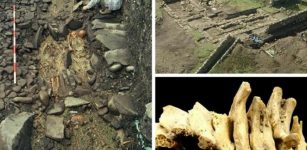 Isle Of May Was A Pictish Healing Center – Monks Used Herbs To Treat Sick And Dying People
Archaeology | Feb 16, 2018
Isle Of May Was A Pictish Healing Center – Monks Used Herbs To Treat Sick And Dying People
Archaeology | Feb 16, 2018 -
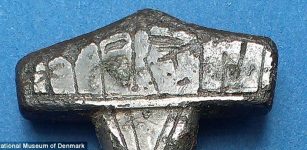 Remarkable Discovery Of Unusual “Hammer Of Thor” Finally Solves An Ancient Mystery
Archaeology | Jul 2, 2014
Remarkable Discovery Of Unusual “Hammer Of Thor” Finally Solves An Ancient Mystery
Archaeology | Jul 2, 2014 -
 Ancient Giant Amphibians Swam Like Crocodiles 250 Million Years Ago – New Study
Archaeology | Mar 31, 2023
Ancient Giant Amphibians Swam Like Crocodiles 250 Million Years Ago – New Study
Archaeology | Mar 31, 2023 -
 Copyright Violations By Earth-Chronicles.com – Fake Site That Steals Content From Ancient Pages Daily
News | Dec 28, 2017
Copyright Violations By Earth-Chronicles.com – Fake Site That Steals Content From Ancient Pages Daily
News | Dec 28, 2017 -
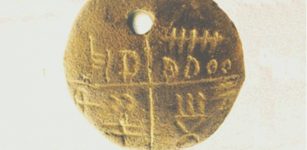 Controversial Tartaria Tablets: The First Writing System In The World?
Artifacts | Nov 13, 2014
Controversial Tartaria Tablets: The First Writing System In The World?
Artifacts | Nov 13, 2014 -
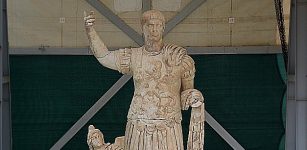 Unique Statue Of Roman Emperor Trajan Unearthed In Ancient City Of Laodicea,Turkey
Archaeology | Apr 12, 2019
Unique Statue Of Roman Emperor Trajan Unearthed In Ancient City Of Laodicea,Turkey
Archaeology | Apr 12, 2019 -
 Mysterious Maya Snake Kings And Their Powerful Kingdom In The Jungle Reveal More Ancient Secrets
Civilizations | Apr 23, 2018
Mysterious Maya Snake Kings And Their Powerful Kingdom In The Jungle Reveal More Ancient Secrets
Civilizations | Apr 23, 2018 -
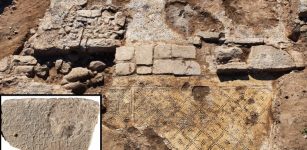 1,500-Year-Old Inscription ‘Christ, Born Of Mary’ Engraved On Magnificent Building Discovered In Israel
Archaeology | Jan 21, 2021
1,500-Year-Old Inscription ‘Christ, Born Of Mary’ Engraved On Magnificent Building Discovered In Israel
Archaeology | Jan 21, 2021 -
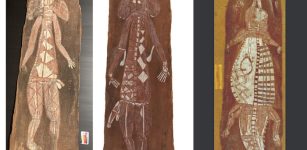 Solving The Bark Painting Mystery In Australia
Archaeology | Feb 23, 2023
Solving The Bark Painting Mystery In Australia
Archaeology | Feb 23, 2023 -
 Your Neanderthal Genes May Prevent You From Metabolizing Drugs Efficiently
Archaeology | Jul 25, 2022
Your Neanderthal Genes May Prevent You From Metabolizing Drugs Efficiently
Archaeology | Jul 25, 2022 -
 500-Hundred-Year-Old Mystery Of Aztecs’ Death May Have Been Solved – New Study
Archaeology | Jan 17, 2018
500-Hundred-Year-Old Mystery Of Aztecs’ Death May Have Been Solved – New Study
Archaeology | Jan 17, 2018 -
 Magnificent 1,800-Year-Old Rock Tombs Beautifully Decorated Discovered In The Ancient City Of Blaundus
Archaeology | Oct 5, 2021
Magnificent 1,800-Year-Old Rock Tombs Beautifully Decorated Discovered In The Ancient City Of Blaundus
Archaeology | Oct 5, 2021 -
 Vercingetorix – Visionary Nobleman And Mighty Warrior Who Led Army Of Gallic People Against The Roman Empire
Featured Stories | Feb 10, 2018
Vercingetorix – Visionary Nobleman And Mighty Warrior Who Led Army Of Gallic People Against The Roman Empire
Featured Stories | Feb 10, 2018 -
 5 Myths About The Amazons – Ancient Female Warriors
Featured Stories | Jan 13, 2016
5 Myths About The Amazons – Ancient Female Warriors
Featured Stories | Jan 13, 2016
